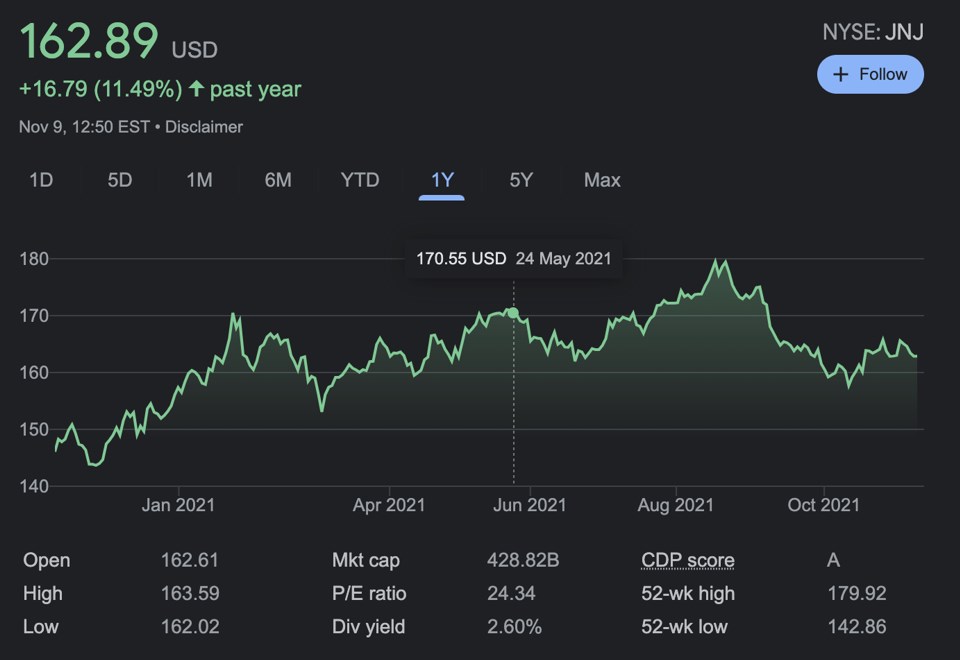Back in May, we published a Stage article about Johnson & Johnson (J&J). Although it is a Top 50 American company by revenue, much of the recent news about the company has had to do with its one-shot vaccine. As we discussed in May, this company is far, far more than a vaccine, which at that time accounted for less than 1% of company revenue. The purpose of this update is to see how the company has performed since it last danced on the Decision Stage.
As a refresher, The J&J brand consists of over 250 brands spread throughout 60 countries. Its three main business sectors are pharmaceuticals (55% of revenue), medical devices (28%), and consumer health (17%). There are countless household brands under the J&J umbrella, including Tylenol, Aveeno, Listerine, Band-Aid, Neutrogena, Pepcid, and Zyrtec. Let’s first take a look at J&J’s stock performance.

As seen above, this year has been all about ups and downs. But it is hard to judge a company entirely by its stock market price (as we have seen with GME, stock market prices are not always reflective of business performance).
Overall, the first three quarters have been good for J&J. In Q3, J&J reported sales of 23.3 billion USD, which is a 10.7% increase compared to Q3 2020. Its net earnings, however, were not so impressive, with only a 3.2% increase to 3.55 billion USD. Up through 2020, there was a significant gap between American sales and international sales, but that gap is closing fast. In 2020, American sales (52.5%) outpaced international sales (47.5%). But in Q3, the gap between American sales (51.2%) and international sales (48.8%) shrunk considerably. This trend of increasing global revenue is a promising one; companies this size love diverse portfolios, and less reliance on one market is almost always a long-term boon.
Looking forward, J&J has maintained the vaccine sales outlook that it has held for most of the year: 2.5 billion USD. Considering the overall revenue outlook for the company is 93.3 billion USD, that means vaccine sales will end up comprising 2.68 per cent of J&J’s annual revenue. Considering that its booster shot has proven to be especially effective, there are few signs that J&J’s vaccine sales will underperform any time soon. Breaking things down by sector, J&J’s Consumer Health division has seen a 5.7% increase compared with 2020. Pharmaceuticals, driven in part by the vaccine, saw a stronger 13.8% bump. Medical Devices also grew by 7.6%.
What is most informative about J&J’s performance is that despite its growth, results have still been a mixed bag; things are just far less predictable than they once were. We saw this since the beginning of the pandemic when the hospitality sector suffered greatly, but the FMCG sector performed exceptionally well. That unpredictable performance was thought to have been temporary, but it seems that even though we have gained more control of the pandemic, COVID-era inconsistency is here to stay.